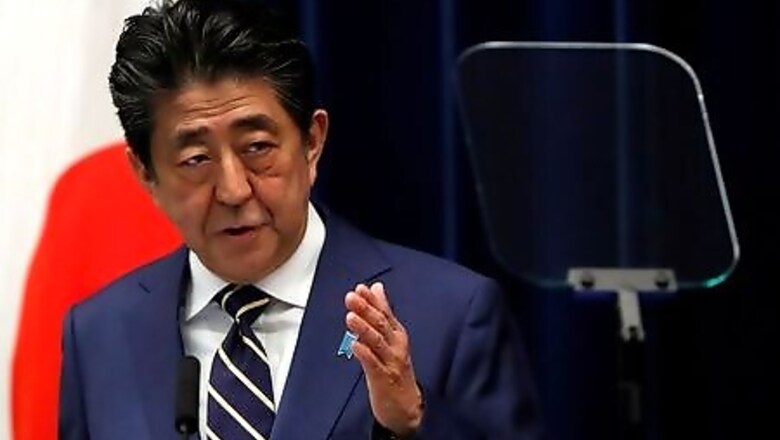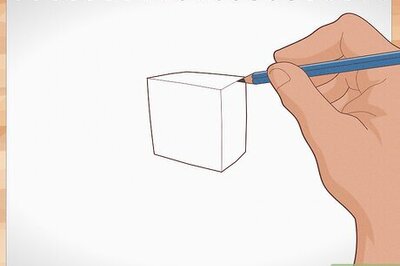
views
TOKYO Japanese Prime Minister Shinzo Abe’s rise to power in 2012 ushered in bold policies known as “Abenomics” that helped revive the economy and boost corporate profits, exports and jobs.
However, the record plunge in Japan’s economy in the second quarter due to the coronavirus has wiped many of the gains of those policies, dealing a political blow to Abe a year before his term as head of the ruling Liberal Democratic Party (LDP) ends.
Japan’s real gross domestic product (GDP) hit almost 540 trillion yen ($5.09 trillion) in September last year, but then began to slide as the U.S.-China trade war and a sales tax hike hit exports and consumption.
The pandemic has since knocked real GDP to 485 trillion yen, its lowest since the 2011 earthquake and tsunami.
(Click here for an interactive graphic of real and nominal GDP since 2011: https://tmsnrt.rs/2Fwq2JK)
Japan’s economy posted a record drop in Q2 https://fingfx.thomsonreuters.com/gfx/editorcharts/yzdpxnmewpx/eikon.png
To deal with the pandemic hit, Abe’s government has deployed combined stimulus spending worth $2.2 trillion, almost half the size of the economy.
That boosted budget spending and added to Japan’s ballooning public debt, already the biggest among advanced economies.
(Click here for an interactive graphic of Japan’s government finances since 2011: https://tmsnrt.rs/312a4iX)
Japan’s government finances https://fingfx.thomsonreuters.com/gfx/editorcharts/rlgpdndenpo/eikon.png
Abe considers strong jobs growth as one of the successes of his policies, which he attributes to strong economic growth although a dwindling working-age population has also kept the jobs market tight.
Japan’s jobless rate stood at a 27-year low of 2.2% in December last year, a little over half the rate when Abe took power in 2012, although the pandemic has since nudged it up.
(Click here for an interactive graphic of labour-related indicators since 2011: https://tmsnrt.rs/2DPcZ5N)
Japan’s job market tightness easing https://fingfx.thomsonreuters.com/gfx/editorcharts/azgvokoewvd/eikon.png
Despite years of heavy money printing by the Bank of Japan, inflation had failed to accelerate toward its 2% target, peaking at 1.4% in 2014 after which oil prices slumped.
The pandemic is now stoking fears of deflation as weak household spending depresses prices.
(Click here for an interactive graphic of the core consumer price index since 2011: https://tmsnrt.rs/3aybx3i)
Japan’s core inflation is sagging https://fingfx.thomsonreuters.com/gfx/editorcharts/qmypmkzexpr/eikon.png
The BOJ’s years of money printing have expanded its balance sheet dramatically, which has drained market liquidity.
While the pace of asset purchases has slowed in recent years, the pandemic has forced the BOJ to reopen the monetary spigot.
Critics warn the BOJ’s oversized balance sheet would make any exit nearly impossible without causing market disruptions.
(For an interactive graphic of increases in the BOJ’s long-term JGB holdings and monetary base, click: https://tmsnrt.rs/3l1AglI)
The Bank of Japan is no longer stealth tapering https://fingfx.thomsonreuters.com/gfx/editorcharts/xegvbarrmpq/eikon.png
($1 = 106.0000 yen)
Disclaimer: This post has been auto-published from an agency feed without any modifications to the text and has not been reviewed by an editor



















Comments
0 comment